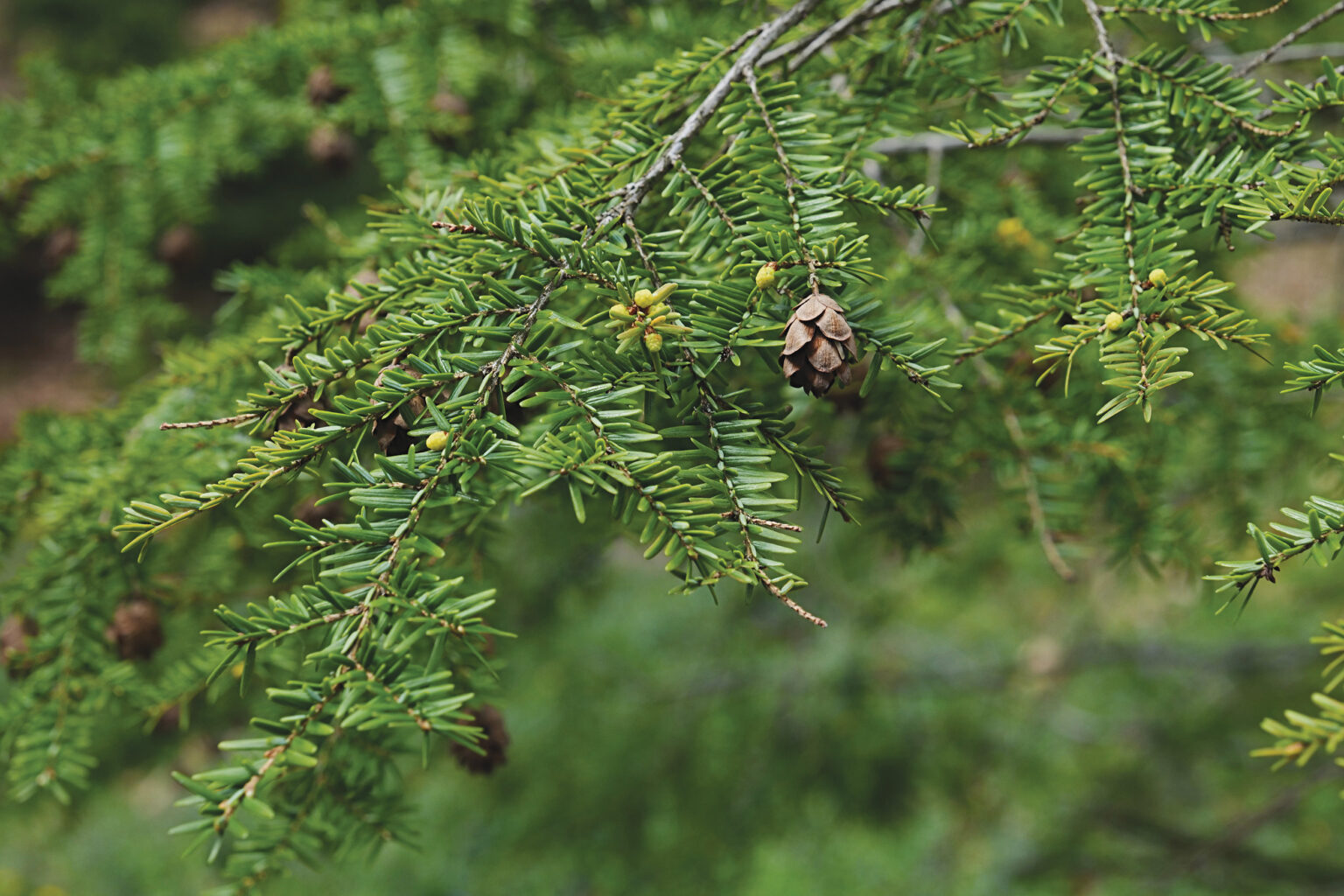The Nature of Eastern Hemlock

By Victoria Lee, Teacher-Naturalist
I have been infatuated with Eastern Hemlock since we first met in the summer of 2019. We were introduced in the atmospheric hush of a remnant stand of old growth in northern Wisconsin. I tend towards a flair for the dramatic, but I mean it when I say it was love at first sight. Growing up in southeastern Wisconsin, I had always been just south, or west, or industrialized enough to have never encountered them before. I wanted to know everything about the gorgeous stranger with the emerald green needles and lacy branches. Luckily, at the time of our fateful meeting, I was a summer intern tagging along on a field trip where my supervisors patiently explained the key components of our surroundings — including my new crush, Tsuga canadensis, the Eastern Hemlock tree. If there ever was a meet-cute, this was it.
I didn’t know it at the time, but Hemlock and I were destined to meet again and again in the coming years as I moved through seasonal positions, unwittingly waltzing around the edges of their range. I moved to northwestern Alabama, and there they were! Due to some magic of ancient glaciation, Hemlock was just as poised with Southern roots, but this time with Big Leaf Magnolias for companions. Then, I was off to Maine, where I was relieved to find Hemlock watching out from the mossy lake edge. Next, I headed back to the Midwest and prepared to say goodbye to species with “Eastern” in their names. However, I was pleasantly surprised to bump into my old friend among the pine and maple-beech lakelands of northwestern Michigan too.
Since that first summer day in 2019, I have learned a lot about Eastern Hemlock. As it turns out, Hemlock’s gifts have been deeply connected to the communities we’ve both inhabited. Their deeply green branches provide a cooling veil for understory plants and streams as well as a winterized ceiling to block out intense snowfall that can inhibit the movement of deer and other critters. The remaining northern old growth patches make unmatched habitat for birds, martens, and many other animals. Hemlock even offers up medicine by lending vitamin C rich needles for tea (don’t worry — the poison hemlock of legend is a very different plant, Conium maculatum, a member of the carrot family). Their tannin-rich bark was also integral to the early tanning industry. In fact, much of the bark was harvested (largely unsustainably) from the same Wisconsin northwoods where we met, and sent to factories in my hometown of Milwaukee. Hemlock’s miniscule cones and dainty needles catch and hold onto water droplets. I don’t know what purpose that might serve ecologically, but I know the sheer delight I take in it when it rains.
So, the next time you come across Tsuga canadensis, stop and introduce yourself. Trust me when I say you’ll want to get to know them. If you’re not sure where to find Eastern Hemlock, I can personally tell you that we are very happy together here along the North Branch.

